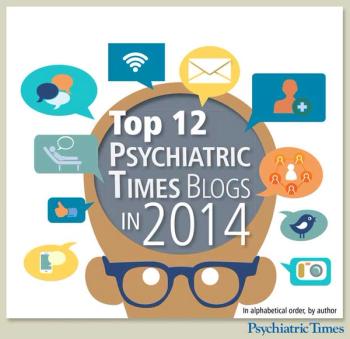
Mental disorders have become a global commodity. According to the author, "a diagnostic fad heavily promoted first in the US has now quickly spread around the world."

Mental disorders have become a global commodity. According to the author, "a diagnostic fad heavily promoted first in the US has now quickly spread around the world."

I had planned to make this month’s column about the best 10 advances in psychiatry during 2014. While some things changed for the better for our patients and their families-and our profession-I’ve been having a hard time with my list.

How do we catch up with other developed countries to create a compassionate, cost-effective mental health system? Psychiatric Times posed this question to some of the leading experts in the field.

“Distress” hardly captures the inner world of those with severe forms of psychotic illnesses. Terms like “agony,” “torment,” and “anguish” would be much closer to the mark, for many patients.

Recently there has been considerable controversy and confusion around how the word "psychosis" should be used, if indeed it should be used at all. More in this commentary.

A slideshow on some of this year's blogs at Psychiatric Times, written by leaders in the field of psychiatry.

Dostoevsky wrote 135 years ago, but his critique of forensic psychiatry and forensic psychology stands the test of time.

Through archival footage and interviews, the documentary "Prozac: Revolution in a Capsule" does a remarkable job of capturing the time when transformation ignited the collective imagination.

In this commentary, the author states, “We must get back to treating the whole person, not just his brain circuits. The brain is involved in all we do and what we are, but it is also itself influenced by our psychology and social context.” Care to weigh in?

There are probably many social, economic, and familial forces at work in generating the trend toward public incivility, and it would be silly to blame the Internet for the riot in Keene.

We need to join forces with our natural allies: the patients we treat and their families, as well as government, community, and business leaders, to make addressing the impact of violence and abuse one of our highest public health priorities.

For this psychiatrist, learning a section of the Talmud known as Megillah brought to light an important exchange that has implications in therapy and psychopharmacology, regardless of theoretical stance.

Everyone, in their own way, wants what's best for people with mental health challenges, but risks and benefits are interpreted through a personal lens.

What can we do to fix our broken mental health system? Psychiatric Times posed this question to some of the leading experts in the field.

Whether these psychiatrists helped or hindered societal events probably depends on one's political perspective.

For those suffering from severe mental illness, this is the worst of times. Walk the streets of any city and you will find multitudes of the mentally ill left homeless to fend as best they can for themselves.

“Schizophrenia” is a name, not a disease. You are about to read the life story of a remarkable man who describes how he overcame poverty, orphanhood, and schizophrenia to become an author, an LCSW, a leader in the mental health advocacy movement, and an inspiration for many others.

There is no clear boundary separating religious and political extremism from psychiatric illness. One man's cherished belief is another man's delusion. More in this commentary.

The privacy and security of our offices-the therapeutic bunkers within which our wounded patient-warriors hunker down against an unseen enemy-is the fundamental first barricade between private sufferings and the potential for public humiliation.

Some inflexible anti-psychiatrists are blind ideologues who see only the limits and harms of mental health treatment, not its necessity or any of its benefits. More in this commentary.

In his blog for Mental Illness Awareness Week, NIMH Director Thomas Insel talks about the complexity of mental disorders and the need for scientists, clinicians, patients, and families to work together in searching for better treatment.

This is the fourth in a series of blogs devoted to our society’s shameful neglect of people with severe mental illness.

Leaders (and really that is all of us in one way or another) have the challenge of understanding and responding to future risk.

There is much concern about any breach at the White House: the most recent intruder could have been shot and possibly killed during his run. Why wasn’t he?

You don't need to be religious to say this prayer . . . do you?